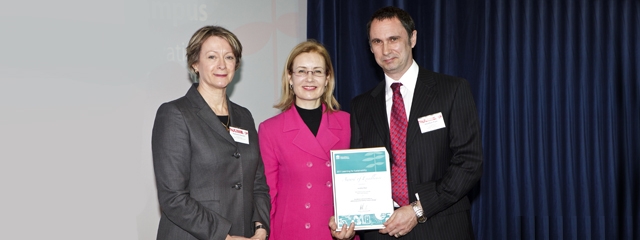Neo Industrial Design lead designer Jon Pryer receiving the Award for Excellence and Innovation in Addressing Sustainability Issues in Design (left to right) Francesca Saccaro, Associate Director OTEN ; Hon Gabrielle Upton MP, Parliamentary Secretary for Tertiary Education and Skills.
By thinking about how your product will be made, serviced and used and ultimately disposed of you can do a lot to minimise its environmental impact. This is called whole lifecycle thinking; small details of well considered design at the beginning of a products life can have significant impact over the products entire lifecycle.
If you equate energy and resources input into making, running and disposing of your product as cost then saving that energy and resources is not only good for the environment but also good commercial sense.
Generally if a material or component is expensive it’s going to be because a lot of energy was put into producing it – making things cheap isn’t necessarily good for the environment but it is oftern a by product because neither is making them expensive and uncompetitive.
Increasingly environmental credentials are seen both by consumers and manufactures as deciding factors in purchase decisions and a source a product differentiation and value adding.








